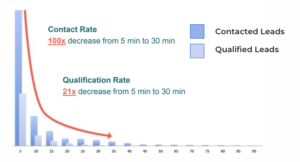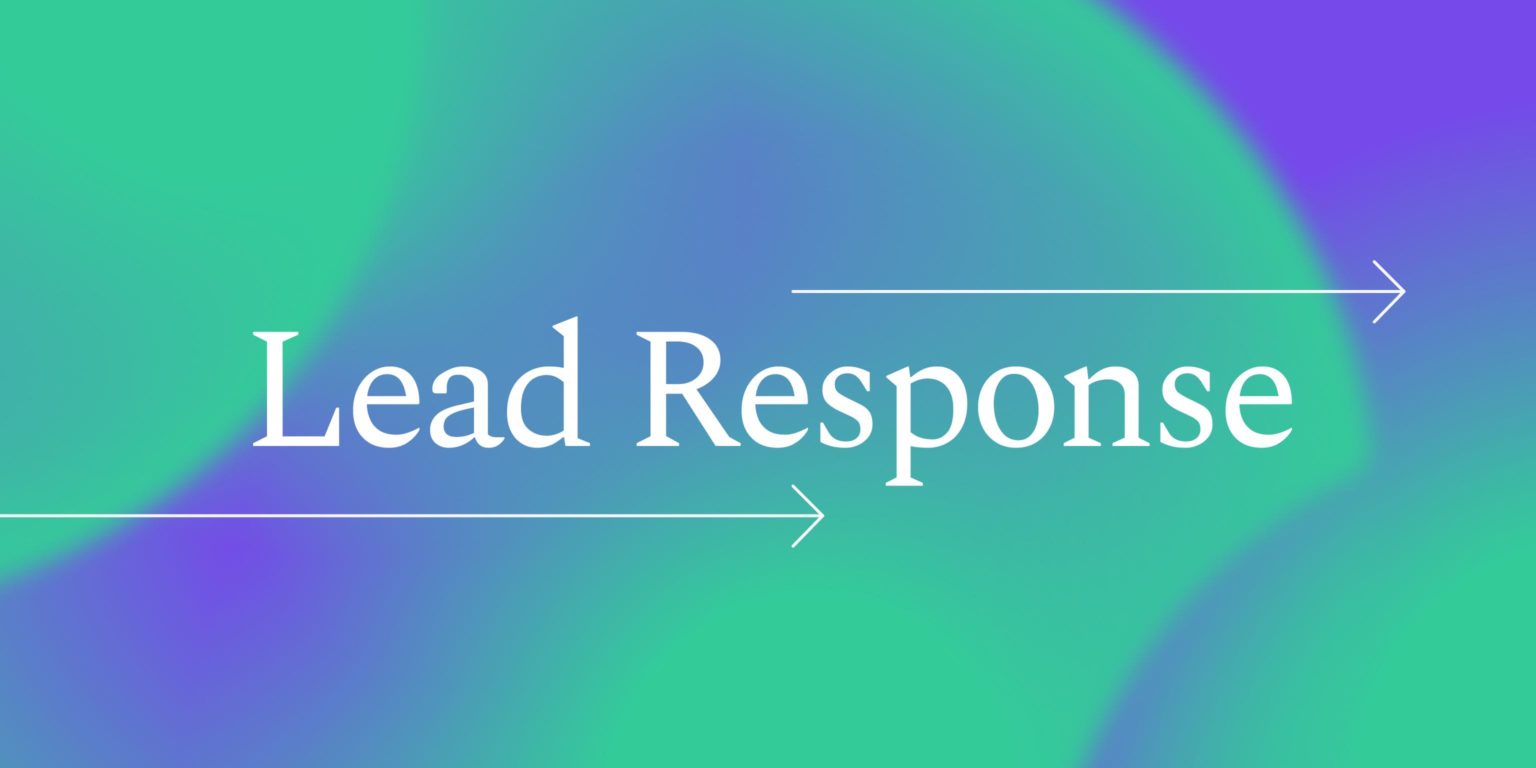
Lead Response: Everything You Need to Know
A sales team’s lead response, and everything that surrounds it, makes or breaks their success. At its core, lead response is the amount of time that it takes for a sales team to respond to an inbound lead sourced from their site, an advertisement, or a partner. However, the enablement of a rapid lead response time and the ability to respond through the right channel, with the right message, and the optimal content at the right moment is far more complex.
The optimal lead response is extremely quick, but it goes far beyond just answering a request. Sales teams must use technologies to prioritize their outreach, enable rapid communications, gather contextual information, and deliver it in the right manner, in conjunction with a real human connection. To put it all in one place, we gathered together everything you need to know about lead response, including: the optimal lead response time, how you should respond to inbound leads, and the technologies you can use.
Why is Lead Response Time Important?
Lead response time is so essential because the quicker your sales team responds, the more likely you are to get in touch with the contact. Inbound leads are very important because of two reasons. First, they typically have marketing spend against them, whether it be advertising, events, or even SEO, content, and partnerships. This means that inbound leads are more costly than outbound ones, and need to be captured and sold to so teams can earn a positive return on investment.
Second, due to this marketing spend as well as their general nature, inbound leads are typically more qualified and ready to buy than outbound leads. This means they are looking to purchase, are in the midst of a purchase decision, or are a good customer fit. This interest also shortens the sales cycle, which means they have a higher probability of both closing, and closing quickly.
This makes inbound leads highly profitable for sales teams (when managed correctly) but they must be properly capitalized on with a rapid lead response time.
The Optimal Lead Response Time
Studies have shown that the optimal lead response time is 5 minutes or less. Within that, the sooner the better, so your lead response time should be as fast as possible with a maximum time of 5 minutes. In fact, the data further shows that you are 100 times more likely to get in touch with an inbound lead 5 minutes after they have contacted you versus 30 minutes after. Moreso, the likelihood of a sales rep successfully qualifying an inbound lead drops 21 times between 5 and 30 minutes. This means that a fast lead response time is crucial when it comes to capitalizing on inbound leads and earning the ROI.
Unfortunately, the vast majority of B2B sales organizations are incredibly slow. The average lead response time is 42 hours. Other data shows less than half of B2B companies respond to inbound leads within 5 days, and 58% never even respond. Take into consideration the fact that B2B marketers spent over 4.6 billion dollars in advertising last year, and that means nearly 2.7 were completely lost.
However, as stated previously, lead response is more than just a quick response time. Leads need to be contacted in the right order, through the right channel, and with the right message. It seems that many companies have attempted to solve the problem of rapid response with an automated email, but that is not contextually relevant, provides no value, and no opportunities for true engagement. To properly respond to a lead, sales teams must provide legitimate value in their response.
How to Respond to Inbound Leads
Using Lead Response Reps
Depending on the volume of inbound leads that your team generates, companies either hire reps specifically to handle inbound leads, or assign certain inbound leads to specific reps.
These inbound reps are known as Lead Response Reps, Inbound SDRs, or Marketing Qaulification Reps. When an inbound lead fills out a form, downloads marketing content such as eBooks or whitepapers, attends a webinar, answers marketing emails, or even calls in, lead response reps are tasked with responding to them.
The benefits of hiring a team of dedicated lead response reps is that they can help to create a dependable stream of opportunities for your account executives. Account executives don’t have to spend time qualifying inbound leads themselves, and they can instead spend their time only selling to sales-ready leads. Companies often choose to hire dedicated lead response reps based on the number of unique monthly marketing leads. It’s advised to hire a company hire its first dedicated lead response rep when there are between 300-400 unique marketing leads, though this number will vary depending on industry and customer base.
What Channels to Use
To increase your chances of generating a conversation with an inbound lead, sales reps should attempt to contact prospects through at least two (if not more) channels. If there was an initial way the request came in, such as phone, email, chat, or text, the first response should always be through the same channel. Then, the sales rep should immediately follow up through a second channel, but in a manner that is not overly intrusive. If the initial contact took place through a web form, the phone is the most preferred method as it lends itself most directly to a true conversation.
For example, if a prospect fills out a web form, the sales rep should immediately attempt to contact that individual over the phone. If they do not get in touch, they should leave a message, then immediately send an email about why they called.
If an inbound lead comes through and email, text, or chat, the lead response should take place within that channel, and then the rep can move the conversation to a phone call or video conference which is more conducive for a sales conversation.
How to Prioritize Inbound Leads
Naturally, a sales organization may generate hundreds of inbound leads every day, which can be difficult for reps to respond to. Not every lead is going to be an ideal buyer as well, and therefore you don’t want unqualified contacts to take precedence over qualified and interested buyers. Sales reps can only respond to certain leads quickly, and there should prioritize their responses to the most qualified and ready to buy contacts.
This is where technology can help. Sales tools will score leads and automatically prioritize them for sales reps. The key is to not automate the actual connection, as a standard email may turn off the prospect. Instead, automate the path to a response. The tool should look at things like the amount of time spent on site, prior engagements, what pages and content they have engaged with, and generate a score. The higher the score, the more important they are to get to. Inbound leads are then ordered according to their score and reps are able to easily see which contacts to respond to first. Even better, some tools and automatically notify exactly who and how reps need to reach out to.
Lead Response Requires Contextual Information
Lead response is more than simply reaching out to an inbound lead quickly. The reps who respond must be informed with the right information and armed with the right steps in order to effectively engage and capitalize on the leads. Sales applications with automated lead enrichment that can both gather applicable information and deliver to the reps in a manner that allows them to have a valuable and impactful conversation are key. Reps should not spend time scavenging the internet for essential lead information before every call, nor should they waste time dialing the wrong numbers or emailing incorrect addresses. The right sales application will automate lead data enrichment and CRM cleanup and save valuable time from both an admin and outreach perspective.
How to Optimize Lead Response
Sales analytics tools can generate data that provides complete visibility into the performance of marketing campaigns, especially those that capture inbound leads. With this insight, we can maximize our inbound efforts to collect as many leads as possible. This newfound ability has produced large increases in inbound lead volume for nearly every company, creating the need for reps who specifically handle inbound leads.
We’ve found five metrics that are key indicators of your inbound reps’ effectiveness. By monitoring them, you gain direct visibility into how quickly and effectively your team (and each rep) responds to each inbound lead. You can also instantaneously diagnose an issue and respond before you damage your pipeline.
Average Lead Response Time by Rep
The average lead response time by rep reveals, on average, how long it takes reach rep to respond to an inbound lead.
When you compare average response time with each reps’ score, you can identify a problem before it begins. If a rep is faster, that’s great, they can serve as an example. What specifically do they do that allows them to respond quickly? Or, do they handle less lead volume?
If a rep is slower, they should receive a little extra help. Are too many leads assigned to the lagging reps? Do they spend too much time trying to reach each individual contact? Or, are they simply not quick enough? If a rep’s time increases, you must intervene quickly. Every second a lead goes uncontacted, the chance of a win drops.
Opportunities by Lead Response Time
Now that you know how long it a takes a rep to respond to any given inbound lead, you can start to understand how it impacts your pipeline. Opportunities by lead response time takes the inbound leads that get converted to opportunities, and then examines how long it took a rep to make contact.
This is combined with the average lead response time by rep so you can immediately know if inbound response time is affecting your pipeline. If your opportunity by lead response time is 10 minutes, but your reps’ average lead response time is 30 minutes, your reps are responding too slowly to effectively create an opportunity. Therefore, your funnel will likely slow. On the other hand, if the average lead response time is faster, they could be on the path to outperform their goals.
The same method can be applied on an individual basis as well. If a rep struggles to convert inbound leads, examine their response time. It may be slower than what is necessary to create an opportunity.
Conversion Rate by Lead Response Time
Conversation rate by lead response time makes a direct comparison between your reps’ inbound lead response time and their lead conversion rate. With it, you can directly examine how response time impacts your conversion rate.
Many companies create SLAs (service level agreements) that dictate how quickly reps are supposed to respond to leads. How exactly do you determine that time? If you know that your conversion rate drops after 30 minutes of no contact, then you know where to set your standard. Conversion rate by lead response time also shows how response time impacts your sales goal attainment.
Inbound Web Leads by Product
This is where marketing can get in on the fun as well. Most companies either sell multiple products or run multiple marketing campaigns at the same time. Inbound web leads by product tracks how many leads are generated by each different campaigns. This is especially useful if you have a team with product specialists who only focus on the sales of a specific product.
With inbound leads by product, you can see exactly how many those inbound leads those specialists need to handle, and marketing can understand how effective their campaigns are.
Follow-up Rate
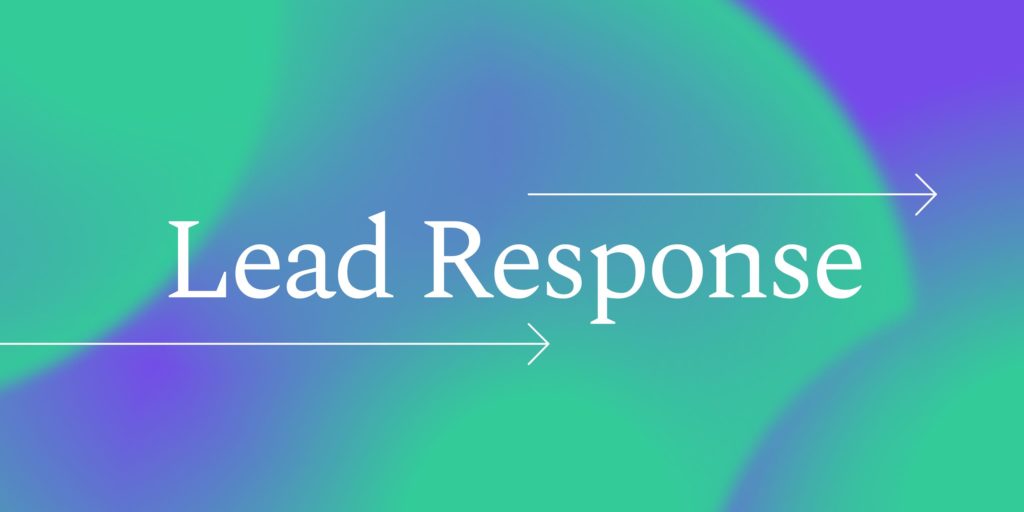 Follow-up rate tracks the percentage of inbound leads that have calls and emails logged. Basically it shows you how many attempts at contact each rep makes on their inbound leads. In B2B sales, it can take up to eight or more calls and emails to secure a meeting. Therefore you can see which reps are doing their due diligence and making multiple contact attempts on each lead.
Follow-up rate tracks the percentage of inbound leads that have calls and emails logged. Basically it shows you how many attempts at contact each rep makes on their inbound leads. In B2B sales, it can take up to eight or more calls and emails to secure a meeting. Therefore you can see which reps are doing their due diligence and making multiple contact attempts on each lead.
The Best Response Time Wins
A recent experiment revealed that only 42% of B2B companies responded to leads within 5 days (yes, you read that right — days). What’s even more shocking is the fact that the other 58% never bothered to respond. Given the fact that B2B marketers are projected to spend over $4.6 billion in advertising this year to attract these leads, that’s nearly $2.7 billion down the drain. Not only that, even research dating back to 2007 shows that responding to leads within 5 minutes dramatically increases the likelihood of connecting with prospects. Wait 30 minutes to contact that prospect and your odds of connecting with them plummets 100x.
But it’s 2025 — prospects expect a near immediate response. Whether it’s due to the change in buying behavior, or new technology that allows instant contact, it’s simply common sense to respond to inbound leads as soon as possible.
Make it easy for reps to respond to leads quickly
 With countless sales tools open at any given moment, it’s no wonder that some leads can fall through the cracks. Plus, reps may not be notified in real-time about incoming hot leads. That’s where something like the Intelligent Dialer makes the difference when it comes to true sales productivity. When new inbound leads come through, reps are alerted in real-time via a desktop notification.
With countless sales tools open at any given moment, it’s no wonder that some leads can fall through the cracks. Plus, reps may not be notified in real-time about incoming hot leads. That’s where something like the Intelligent Dialer makes the difference when it comes to true sales productivity. When new inbound leads come through, reps are alerted in real-time via a desktop notification.
They don’t have to refresh lead lists in Salesforce or switch back and forth from different applications to view hot leads. When it comes to lead response time, every minute counts, especially when 72% of B2B buyers say that a vendor’s response time is the most important attribute of a winning vendor.
In the Intelligent Dialer, leads are not only queued chronologically, but reps can easily use a drop down to filter by lead source. From here, having a contextual conversation is simple since reps will know exactly where prospects are coming from, what content they’ve engaged with, any comments or notes the prospect may have left, and more.
Reduced lead response times means more sales opportunities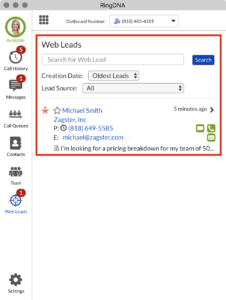
Even though connecting with a prospect is important, it’s even more significant to note that decreasing lead response times can help fill your pipeline will more sales opportunities. Not only will you beat out the competition as the first to respond, your team will also be the first to qualify the prospect.
In fact, those odds are 21x greater when lead response is 5 minutes versus 30 minutes. You can see where calling while the lead is still hot can have a huge impact on sales results and your company’s bottom line. Interested in seeing this in action?
Chat with our team to see a demo. If you’re already using Revenue.io, email support@revenue.io to enable this feature for your team.
Accelerate Pipeline with a Dedicated Lead Response Team
In our last eBook, we asked 20 top sales leaders to reveal their biggest productivity secrets. Several of them mentioned the power of breaking an inside sales team into specialized roles such as prospectors, inbound lead qualifiers and account executives. Many sales leaders agree that sales role specialization is the best way to ensure that your closers have a steady stream of qualified opportunities to sell to. Some of the most successful companies around (such as salesforce.com) have seen massive revenue growth through sales role specialization. And while many of our customers understand that dividing sales teams into dedicated roles can improve pipeline, we’ve received lots of questions about where to begin.
Our newest free eBook kicks off our series on role specialization, addressing one of the most important specialty roles in sales: the lead response team.
Lead Response is a Full-Time Job
If your company is like most, your marketing team is investing serious resources into advertising, content marketing, email, direct mail and a host of other efforts designed to provide sales reps with hot inbound leads. Inbound leads are often the most sales-ready.
However, one of the biggest mistakes most companies make is lacking an optimized process for converting leads that fill out forms, download content and pick up their phones to call. Hiring a dedicated lead response team and supporting them with the right technology is the best way to ensure that every inbound lead is accounted for and qualified.
The result is that you can ensure your account executives have the opportunities they need to succeed.
Lead response is a full-time job. And it’s not one that should be handled by your quota-carrying account executives.
Optimize Your Inbound Lead Pipeline
Is your sales organization truly optimized to transform inbound leads into customers through inbound sales? If you sell products or services over the phone, chances are that you have a marketing team working in overdrive to generate a steady stream of inbound leads. Marketers spend long hours investing in ads and creating content that inspires qualified leads to pick up their phones and call. But the fact remains that most companies have yet to optimize inbound sales. And this is a big problem, because recent data from BIA/Kelsey reveals that more businesses view inbound phone calls as a top quality lead source than any other channel.
It’s not too late to optimize your inbound sales processes. Here are 5 things that many of our customers are already doing to ramp up inbound lead-to-close rates.
Separate Your Inbound and Outbound Sales Reps
One of the top mistakes a company can make is to say “sales is sales.” But being successful at inbound and outbound sales require completely different tactics and approaches.
Expecting an inbound rep to also be great at outbound sales would be like expecting a musician to be proficient at a completely different instrument and saying, “it’s all music.” But specializing helps your team see much faster results. Think about it. If a musician spent half of her time working on playing the piano, and the other half of her time playing drums, it would take her twice as long to master each respective instrument. However, if she focused all her efforts on mastering the piano, she would see results a lot quicker.
By specializing, sales reps can see results a heck of a lot quicker. And in today’s fast-paced business environment, ramping up a sales team quickly can spell the difference between bankroll and bankrupt.
Separate Your Team Into Product Specialists
Several of our customers are seeing success by specializing beyond sales roles and are specializing by product or vertical. Say your company sells SaaS hosting packages. Imagine if every time a caller dials your business looking for a cloud app hosting package, that caller was instantly connected with a rep who only sells cloud app hosting packages. They would be far more familiar with the specific pain points, competitors and objections that go with selling app hosting packages than a general rep who sells all manners of hosting packages.
We designed Revenue.io to be able to specifically route inbound calls to specific closers or inbound sales queues based on the specific ad or URL they saw before calling. For example, if a prospect clicked on a Google ad for “App Hosting Packages” they could be given a phone number that automatically routes them to an app hosting specialist.
Use Sales Scripts
Sales scripts are almost ubiquitous in the telemarketing agency. As a result, many more skilled reps handling inbound calls have an aversion to using sales scripts. “Using a script kills the natural flow of a conversation,” you may have heard reps say. But skilled inside sales reps don’t have to stick to scripts verbatim. Simply having access to important talking points, objection-busters and current promotions can help reps perform at peak levels. After all, even top NFL teams still use a playbook.
Give Marketers Real-Time Feedback
Revenue.io’s call rating tool enables reps to give marketers real-time feedback into lead quality from specific marketing campaigns.
Even the most skilled inbound sales reps will have a hard time converting unqualified leads into opportunities. Creating predictable revenue streams demands that inbound leads are at least somewhat qualified. Inbound reps need a system to alert marketing, in real time, to the percentage of qualified leads that are coming in. There are several ways to do this. Of course reps can log data manually in custom CRM fields. But your reps can take far more calls if they have a way to quickly alert marketing to the quality of leads being generated by campaigns. To that end, Revenue.io’s call rating tool is helping our marketing customers optimize campaigns to drive more qualified traffic to inbound sales reps.
Record Calls
Sure, inside sales managers can learn a lot from dashboards. They can predict which reps are on pace to meet goals or which times of day have the highest volume of inbound calls. But in order to optimize ROI, managers need to constantly be searching tactics that are both successful and repeatable.
Listening to call recordings can be one the best ways to hear—straight from the front lines—what’s working and what isn’t. Is a particular rep creating more pipeline than her coworkers? If so, listen to that rep’s sales pitch to see if her success can be replicated. Sure, maybe she’s a natural. But perhaps she’s thought of a new way to pitch your company’s offerings that really resonates with customers. Without listening to a recording, you’d know that she was a great rep but you might never know why! That’s why we were sure to provide our customers with th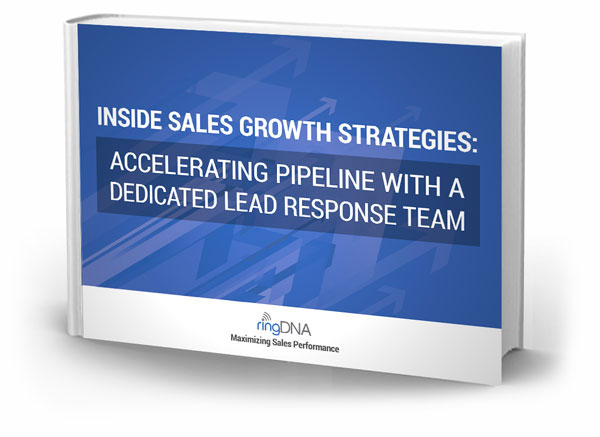 e ability to automatically record calls and log them in Salesforce.
e ability to automatically record calls and log them in Salesforce.
Want to learn more inbound sales strategies? Download our free eBook Accelerating Pipeline with a Dedicated Lead Response Team!
Lead Response Time FAQs
1. What is lead response time and why does it matter?
Lead response time is the amount of time it takes a sales rep to follow up with an inbound lead. It’s critical because leads contacted within 5 minutes are 100x more likely to convert than those contacted after 30 minutes, significantly increasing the chances of a successful sale.
2. What is the optimal lead response time for B2B sales?
The optimal lead response time is 5 minutes or less. The faster the response, the higher the likelihood of qualifying the lead and moving them into the pipeline. Studies consistently show that delays drastically reduce conversion rates.
3. How should sales teams prioritize inbound leads?
Sales teams should prioritize leads based on lead scoring. Modern sales tools assess a lead’s behavior, source, and engagement to automatically score and surface the most sales-ready prospects. Reps can then focus efforts on high-intent buyers first.
4. What channels are best for responding to inbound leads?
Start with the channel the lead used to reach out (e.g., phone, form, chat). Then follow up through a secondary channel—typically phone or email—to increase the chances of a live connection. Phone is often preferred for initiating real-time sales conversations.
5. Should companies have dedicated lead response reps?
Yes. Hiring inbound SDRs or lead response reps helps ensure every inbound lead is contacted promptly. This structure allows account executives to focus on closing deals while lead response reps qualify and route leads efficiently.
